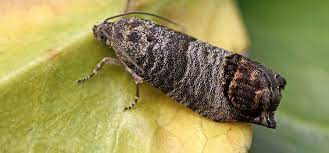Codling moths (Cydia pomonella) are one of the most destructive pests that affect apple and pear crops worldwide. These moths lay their eggs inside the fruit, leading to significant damage and decreased yield. This article provides a comprehensive guide for farmers on how to manage this pest.
According to the University of California Agriculture and Natural Resources (UCANR), there are several ways to control codling moths. One of the most effective methods is to use pheromone traps to monitor their population and determine the right time for spraying. UCANR recommends using insecticides that are specifically designed for codling moth control and applying them during the early stages of fruit development.
Another effective way to control codling moths is to implement cultural control methods such as pruning infected branches and removing dropped fruit from the orchard floor. This helps to eliminate the hiding places and breeding sites of the moths.
In recent years, there has been increased interest in using biological control methods to manage codling moth populations. One promising method is the use of sterile insect technique (SIT), where male moths are sterilized and released into the field to mate with females. This reduces the number of viable eggs and decreases the population of codling moths.
In conclusion, codling moth infestation can have a significant impact on the yield and quality of apple and pear crops. Effective management of this pest requires a combination of different methods, including monitoring the population, using insecticides, implementing cultural control methods, and considering biological control methods.
#CodlingMoth #PestManagement #FruitCrops #Agriculture #Farmers #Agronomists #AgriculturalEngineers #BiologicalControl #Insecticides #SterileInsectTechnique

































